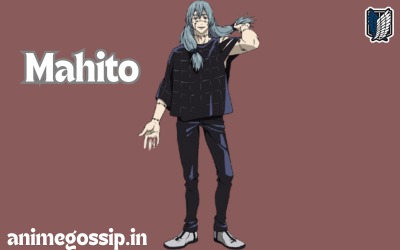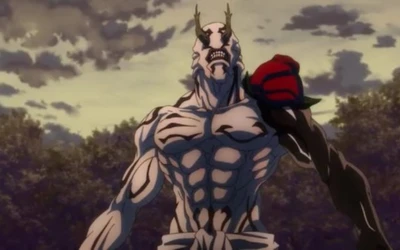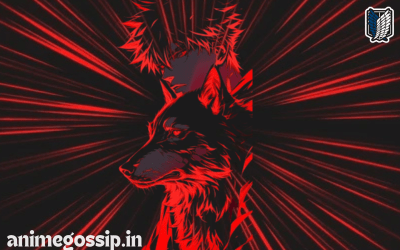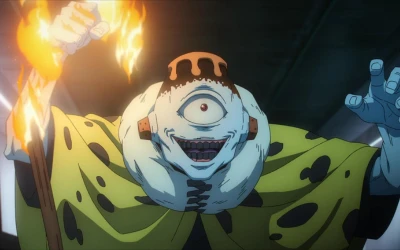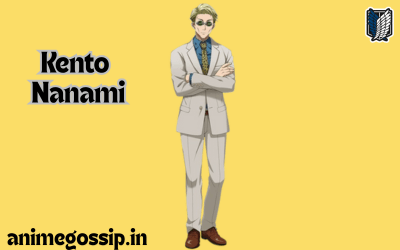Suguru Geto, a deeply rooted character in Jujutsu Kaisen’s complex world, plays a pivotal role as an antagonist in both the main series and its prequel, Jujutsu Kaisen 0. His complicated journey takes place against a backdrop of sorcery, curses, and a battle between jujutsu sorcerers and the supernatural.
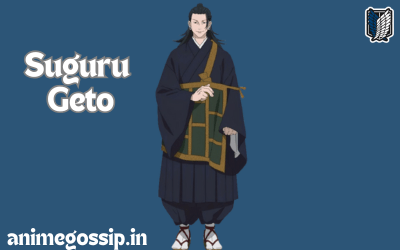
Introduction
a. Suguru Geto, an antagonist in Jujutsu Kaisen series and its prequel Jujutsu Kaisen 0
Suguru Geto emerges as a prominent antagonist within Jujutsu Kaisen’s captivating world, leaving an indelible mark on both the main series and its prequel, Jujutsu Kaisen 0. His character, which is completely woven into the story, grows significantly, making him a compelling force within the Jujutsu Kaisen universe.
Suguru Geto is introduced in the series as a former student of Masamichi Yaga at Tokyo Jujutsu High. This educational background places him in the company of notable characters such as Satoru Gojo and Shoko Ieiri, laying the groundwork for a complex interplays of relationships and ideologies. As the plot progresses, Geto’s role as an antagonist takes center stage, and his character becomes central to the series’ overarching themes.
Suguru Geto’s character is given more depth in the prequel, Jujutsu Kaisen 0, which sheds light on his formative years and the events that shape his worldview. The contrast between Suguru Geto’s early days as a student and his later transformation into a curse user heightens the mystery surrounding him.
b. Former student of Masamichi Yaga at Tokyo Jujutsu High, alongside Satoru Gojo and Shoko Ieiri
Geto’s journey begins in the halls of Tokyo Jujutsu High, where he studied alongside Satoru Gojo and Shoko Ieiri under the tutelage of Masamichi Yaga. This academic setting establishes the relationships and conflicts that define Suguru Geto’s personality.
Suguru Geto demonstrated promise as a student, initially believing in the traditional role of jujutsu sorcerers—protectors of non-sorcerers. His friendship with Satoru Gojo, his best friend, and their shared desire to be the strongest paint a picture of a young man driven by ideals and aspirations.
Suguru Geto’s character is enhanced by the contrast between his early days at Jujutsu High and the path he later takes as an antagonist. The camaraderie he once shared with his classmates has devolved into a complex web of opposing ideologies.
c. Expelled from Jujutsu High due to an incident where he massacred over a hundred civilians, earning the title of the worst curse user
The story takes a dark turn, however, when Suguru Geto’s character undergoes a transformation fueled by a tragic incident. Suguru’s beliefs were transformed by the shadows cast by the Star Religious Group’s actions and the death of Riko Amanai. Suguru, disillusioned and questioning the meaning of his actions, eventually takes a path that leads to his expulsion from Jujutsu High.
When confronted with the Star Religious Group’s evil actions and the applause for Riko Amanai’s death, Suguru begins to question the very foundations of his role as a jujutsu sorcerer. His encounters with humanity’s ugliness and the complexities of his own ideals lead to a drastic decision. Suguru makes a fateful decision in a village that is mistreating two girls because they have curse-related abilities: he rescues the girls and, in a ruthless act, eliminates the entire village, officially embracing the identity of a curse user.
Suguru is expelled as a result of this evil event, and he becomes known as the worst curse user. His actions, motivated by a deep hatred for non-sorcerers, set the stage for a character with complex motivations, opposing beliefs, and a path that intersects with the larger story of Jujutsu Kaisen.
As we learn more about Suguru Geto, the layers of his personality, internal conflicts, and the consequences of his decisions emerge, adding to the rich tapestry of Jujutsu Kaisen. Following that, we will investigate Suguru’s distinct appearance and the evolution of his outlook, providing a thorough understanding of his character.
Appearance
Suguru Geto’s physical appearance has a significant impact on his character and the plot of the Jujutsu Kaisen series. Here’s a closer look at his appearance:
a. Tall, Slim Man with Long Black Hair
Suguru Geto is depicted as a tall and slim man, which adds to the mystery and intensity that surrounds his character. His stature lends him a commanding presence, which is appropriate given his role as an antagonist in the Jujutsu Kaisen series. The tall and slim physique not only reflects his physical skills but also heightens the visual impact of his actions in the plot.

Geto’s appearance is defined by his long, flowing black hair. The hairstyle, which is partially tied behind his head with the rest cascading down his back, not only adds to his overall appearance but also represents a certain level of irregularity. Geto’s distinctive hairstyle distinguishes him in the world of jujutsu sorcery, where appearances frequently hint at one’s abilities and tendency.
Long black hair is a common visual element in anime and manga, often associated with characters of depth, complexity, or darker motivations. It becomes a visual cue in Geto’s case, prompting the audience to delve deeper into the layers of his personality and the complex web of emotions and convictions that define him.
Suguru Geto’s appearance, including his tall and slim physique and distinctive long black hair, becomes intertwined with his actions and choices as the story progresses, creating a visual narrative that complements the larger themes of Jujutsu Kaisen.
b. Initially Wore a Normal Jujutsu High Uniform as a Student
Suguru Geto followed the standard dress code while attending Tokyo Jujutsu High, wearing the typical jujutsu high uniform. This uniform, likely a traditional robe and accessories, served as a visual representation of his affiliation with the institution and dedication to the study of jujutsu sorcery.
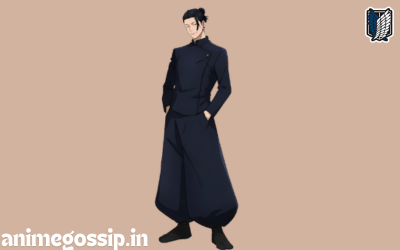
Geto’s first appearance in the standard uniform establishes him as a student dedicated to the practice and principles of jujutsu. The uniform, which he shares with Satoru Gojo and Shoko Ieiri, represents a sense of unity and shared purpose among Jujutsu High’s student body.
The decision to portray Geto in the standard jujutsu high uniform emphasizes the contrast between his early beliefs and later ideologies. As a student, he may have believed that jujutsu sorcerers should protect non-sorcerers. The uniform serves as a visual reminder of a time when Geto’s worldview and convictions differed from the path he eventually chose as an antagonist.
This early depiction in the jujutsu high uniform becomes an important element in following Suguru Geto’s character development, demonstrating the transformation from a dedicated student to a figure with more complex and conflicting ideologies.
The change in Geto’s appearance from the standard jujutsu high uniform becomes a narrative device as the story progresses, signaling the transformation in his beliefs and actions that leads to the events of Jujutsu Kaisen.
c. Later Disguised as a Buddhist Priest, Sporting a Gold-Colored Kāṣāya Garment Over Black Yukata Robes
Suguru Geto disguises himself as a Buddhist priest, a significant departure from his student days. This change in clothing not only serves as a visual disguise, but also reflects the altered mindset and convictions that shape his character.
The inclusion of a gold-colored kya garment is deliberate, as it represents the traditional attire worn by Buddhist monks. Gold adds a layer of symbolism, as it is frequently associated with spirituality, enlightenment, and purity. Unlike his previous jujutsu high uniform, this new outfit represents a departure from the traditional path and an acceptance of a more equivalent, perhaps morally dark, role within the jujutsu sorcery world.
The black yukata robes worn underneath the kya provide an interesting contrast. Black is frequently associated with mystery, power, and a degree of darkness. Geto’s attire, which combines gold and black, suggests a duality in his character, embodying both the spiritual and enigmatic aspects of his persona.
The transformation into the garb of a Buddhist priest has narrative significance as well. It allows Geto to conceal his true intentions and navigate the world of jujutsu sorcery with relative silence. This disguise allows him to move freely and carry out his plans without being detected, lending a cunning strategy to his character.
As Suguru Geto’s story progresses, the visual representation of his Buddhist priest appearance becomes intertwined with the events, marking key moments in his journey and contributing to Jujutsu Kaisen’s overall atmosphere of suspense and unpredictability.
Suguru Geto’s transformation from a student in a standard uniform to a deceptive Buddhist priest reflects the complexity and depth of his character, setting the stage for the series’ complex narrative developments.
Personality
a. Hated non-sorcerers, often referring to them as monkeys
Suguru Geto’s personality is defined by a deep hatred for non-sorcerers, which he expresses using the mocking term “monkeys.” This contempt stems from his belief in sorcerers’ superiority and his view of them as the next stage of human evolution. Geto hate non-sorcerers to the point of disinfecting himself, considering their presence disgusting.
His persona is defined by a self-satisfied and superior attitude toward ordinary people, whom he considers inferior. This viewpoint is more than just a personal bias; it shapes his actions and decisions throughout the story. Non-sorcerers, according to Suguru Geto, have limited roles, primarily as money-collecting and curse-collecting monkeys. In his ruthless pursuit of a world dominated by sorcerers, he has no doubt about allowing curses to kill non-sorcerers who fail to fulfill their assigned roles.
This aspect of Geto’s personality sets the stage for major conflicts in the Jujutsu Kaisen series, as his ideology clashes with the values held by other characters, particularly those who advocate for more peaceful coexistence between sorcerers and non-sorcerers.
b. Believed sorcerers were the superior race and humanity’s next stage of evolution
Suguru Geto’s beliefs go beyond mere contempt for non-sorcerers; he intensely believes in sorcerers’ superiority, viewing them as the pinnacle of human evolution. Sorcerers, in his opinion, represent the next stage of humanity’s evolution, and their existence represents advancement beyond the capabilities of ordinary people.
This belief is central to Geto’s personality, driving not only his actions but also his future vision. This fundamental ideology supports his arrogance and disdain toward non-sorcerers. Geto envisions a world dominated by sorcerers, viewing them as a more advanced and evolved form of humanity.
This aspect of Geto’s personality adds depth to his character by revealing the depth of his devotion to what he perceives to be the natural order of things. The conflict between his belief in the superiority of sorcerers and the diverse perspectives of other characters becomes a central theme, adding to the narrative’s complexity.
c. Cared deeply for his fellow curse users, considering them as family
Despite Suguru Geto’s strong dislike for non-sorcerers, he shows a different side of himself when it comes to his fellow curse users. Geto cultivates a sense of familial connection among curse users. He refers to his commanders and companions as family, demonstrating a sense of camaraderie that contrasts sharply with his hostility toward non-sorcerers.
The paradoxical nature of Geto’s relationships adds to his character’s depth. While he has a profound dislike for a large portion of humanity, his interactions with fellow sorcerers reveal a genuine capacity for connection and loyalty. The theme of “family” within the curse user community becomes a touching element in understanding Suguru Geto’s character’s complexities.
The contrast between his treatment of non-sorcerers and his genuine concern for fellow curse users creates an equivalent portrayal, forcing readers or viewers to reconcile his conflicting personality traits. This internal conflict adds to the overall richness of the story and the Jujutsu Kaisen series’ exploration of the human psyche.
d. Despite his disdain for non-sorcerers, showed politeness to jujutsu sorcerers under fake personas
Suguru Geto’s ability to put on false personas, especially when interacting with jujutsu sorcerers, is one of the most intersting aspects of his personality. Despite his deep hatred for non-sorcerers, Geto maintains a polite and even friendly demeanor when dealing with his fellow sorcerers. As he navigates the complexities of his relationships within the jujutsu sorcerer community, this duality in his behavior adds a layer of complexity to his character.
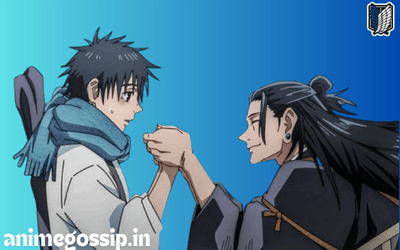
Under this appearance, Geto shows a level of courtesy that contrasts sharply with his dismissive attitude toward non-sorcerers. He pretends to befriend characters like Yuta Okkotsu while harboring ulterior motives and a secret agenda. This strategic approach demonstrates Geto’s manipulative side, as he employs deceptive personas to further his overall goals.
Suguru Geto is a character with complex layers of motivation and deception, as evidenced by his genuine care for curse users, displayed as family, and his calculated politeness towards jujutsu sorcerers. Because of this dynamic, he is a compelling and enigmatic figure in the Jujutsu Kaisen story.
Character Development
a. Initially believed jujutsu sorcerers existed to protect non-sorcerers:
Suguru Geto’s character began with a viewpoint that was consistent with the traditional role of jujutsu sorcerers. Suguru believed that his purpose as a sorcerer was to protect non-sorcerers from curses while a student at Tokyo Jujutsu High with his best friend Satoru Gojo. This traditional perspective proposed a symbiotic relationship in which sorcerers acted as guardians, protecting ordinary people from the malevolent forces of curses.
Suguru began his education with a sense of righteousness, viewing the protection of non-sorcerers as a noble and inherent duty. This viewpoint mirrored the jujutsu sorcerer community’s overarching philosophy, emphasizing coexistence and cooperation between sorcerers and non-sorcerers.
Suguru and Satoru’s ambition to become the strongest sorcerers was fueled by their shared belief in the protective role of jujutsu sorcerers. This initial perspective on their mission laid the groundwork for Suguru’s character, laying the groundwork for the transformative events that would later shape his ideology.
b. Changed after the death of Riko Amanai and the actions of the Star Religious Group:
Following the tragic death of Riko Amanai and the disturbing actions of the Star Religious Group, Suguru Geto’s worldview underwent a profound transformation. The death of a fellow student, Riko, became a watershed moment that called into question Suguru’s beliefs and ideals.
Suguru was deeply affected by the Star Religious Group’s celebration of Riko Amanai’s death, which revealed a shameful aspect of humanity. This applause for a tragic event ran counter to his perception of non-sorcerers as beings worthy of protection. Suguru was forced to reconsider his understanding of the relationship between sorcerers and non-sorcerers as a result of the disturbing revelation.
Suguru’s path became increasingly hazy in the midst of these troubling circumstances. The conflict between his original convictions and the harsh reality of human actions caused him to question his beliefs’ foundations. Suguru’s idealistic worldview was destroyed by the followers’ applause, which became a haunting reminder.
Suguru’s character development was marked by this period of internal turmoil, as he grappled with the complexities of morality and the inherent contradictions within the jujutsu sorcerer society.
c. Questioned his actions and ideology over time, leading to a deep internal conflict:
Suguru Geto’s internal conflict grew as he questioned the morality of his actions and the ideology in which he once firmly believed. His character’s evolving nature saw him involved in a profound struggle to reconcile his initial ideals with the harsh realities he encountered.
Suguru’s self-analysis was prompted by Riko Amanai’s death, which prompted him to reconsider the purpose and effectiveness of his role as a jujutsu sorcerer. Suguru’s experiences on increasingly dangerous missions, combined with the growing vagueness surrounding the actions of the Star Religious Group, pushed him into an existential crisis.
Suguru, caught in a never-ending cycle of exorcism and consumption, pondered the fundamental question of who he was truly serving through his offensive attempt. As he sought to define the ethical boundaries of his sorcerer duties, the blurry line between righteousness and pragmatism fueled his internal conflict.
Suguru’s character development was critical during this period of self-reflection, as he navigated the complexities of morality within the world of curses and sorcery. The internal conflict paved the way for subsequent decisions that would alter Suguru’s path.
Background Story
a. Chose to become a curse user after an incident involving mistreated girls in a village
Suguru Geto’s path to becoming a curse user was shaped by an incident in a village where he witnessed the mistreatment of two young girls, Mimiko and Nanako Hasaba. Geto was deeply affected by this event, prompting him to take drastic measures. The mistreatment of curse-related abilities by non-sorcerers instilled in him a sense of rage and injustice.
Suguru made a fateful decision in order to protect the vulnerable and seek punishment for the mistreated girls. Rather than following the traditional ideals of jujutsu sorcerers protecting non-sorcerers, he chose a darker path. The mistreatment he witnessed fueled his transformation into a curse user, laying the groundwork for the events that followed.
Suguru’s reaction to this incident reveals the complexities of his character as well as the moral ambiguity that pervades the Jujutsu Kaisen world. His actions were motivated not only by a sense of justice, but also by a growing disillusionment with the jujutsu sorcerer society’s perceived failures to protect those in need.
b. Rescued two girls, killed all 112 residents of the village, officially becoming a curse user
Suguru Geto took drastic and morally dark actions after witnessing the mistreatment of Mimiko and Nanako Hasaba. Suguru chose to rescue the two mistreated girls from their harasser out of vengeance and belief in the supremacy of sorcerers.
His definition of justice, however, took a dark turn. Suguru took drastic measures rather than taking the conventional route. He not only saved the girls, but also exacted a harsh and indiscriminate form of justice. Suguru’s response was to massacre all 112 village residents, a shocking and ruthless act that cemented his transformation into a curse user.
Suguru Geto had reached the point of no return at this critical juncture. As he embraced the curse user’s powers, fueled by a deep hatred for non-sorcerers, the line between right and wrong blurred. The massacre became a defining act, representing Suguru’s departure from society’s moral constraints and descent into the realm of curses.
Suguru’s decision to become a curse user was more than just a quest for justice; it was a declaration of war against those he held responsible for sorcerers’ suffering. The consequences of his actions would echo throughout the Jujutsu Kaisen narrative, shaping the protagonists’ character dynamics and moral quandaries.
c. Ultimately chose the side of himself that despises non-sorcerers, fighting for a world of only sorcerers
Suguru Geto’s character development reached a tipping point when he adopted a radical ideology. Suguru eventually aligned himself with a belief that despised non-sorcerers, influenced by his experiences, particularly the mistreatment of the two girls and the subsequent massacre. He saw sorcerers as the superior race, and envisioned humanity’s next stage of evolution in a world dominated solely by sorcerers.
Suguru’s shift in perspective revealed his deep bitterness and disillusionment with the current societal order. His contempt for non-sorcerers went beyond a desire for vengeance to a intense belief in reshaping the world to eliminate what he saw as the root cause of sorcerer suffering. Suguru envisioned a world in which the cursed and supernatural ruled supreme, with non-sorcerers relegated to a secondary role.
Throughout the series, his devotion to this ideology drove his actions and decisions. Suguru became a symbol of resistance to the status quo, challenging the traditional roles and relationships of sorcerers and non-sorcerers. His quest for a world dominated by sorcerers pitted him against established institutions and ideologies, setting the stage for complex and morally dark clashes.
Suguru’s decision to fight for a world dominated by sorcerers not only highlighted his radical beliefs, but also served as a driving force behind his antagonistic role in the story. The clash between his vision and prevailing norms added layers of depth to Jujutsu Kaisen’s overarching themes of power, identity, and societal structures.
Abilities and Powers
Suguru Geto, a character in the complex world of Jujutsu Kaisen, possesses a formidable set of abilities and powers, transforming him into a significant force in the series. Let’s get into the specifics of his extraordinary abilities.
Special Grade Sorcerer
Suguru Geto’s jujutsu sorcery journey has been marked by exceptional skills, earning him the prestigious title of Special Grade Sorcerer. His stature among the elite is emphasized by his standing shoulder to shoulder with none other than Satoru Gojo, one of the most formidable characters in the Jujutsu Kaisen universe.
Suguru, along with Satoru Gojo, demonstrated abilities that distinguished them as the strongest in their group while attending Tokyo Jujutsu High. Suguru’s extraordinary skill set and inborn power are highlighted by this designation, which contributes to his reputation as a force to be reckoned with in the jujutsu world.
Suguru Geto’s recognition as one of the strongest during his student days hints at the breadth of his abilities and the impact he had on those around him. This lays the groundwork for his subsequent actions and engagements as a Special Grade Sorcerer.
As we delve deeper into Suguru’s abilities, it becomes clear that his strength is not limited to his rank alone, but also to a versatile skill set that includes various aspects of combat and strategic thinking.
Skilled in Both Cursed Spirit Manipulation & Hand-to-Hand Combat
Suguru Geto’s ability as a Special Grade Sorcerer is not limited to raw power; he also demonstrates remarkable proficiency in cursed spirit manipulation and hand-to-hand combat, showcasing a well-rounded skill set that makes him a formidable adversary.
1. Cursed Spirit Manipulation: Suguru’s mastery of cursed spirit manipulation is a pillar of his abilities. This method allows him to control wandering cursed spirits by absorbing them into small black orbs that he must ingest orally in order to use. The sheer magnitude of his manipulation is impressive, as he can handle thousands of curses at once, demonstrating a high level of control over cursed energy.
“Maximum: Uzumaki,” one of Suguru’s pinnacle techniques, combines a massive number of curses into a single powerful attack. Suguru used over four thousand curses in this technique during a climactic battle with Yuta and Rika, demonstrating his mastery of cursed spirit manipulation.
2. Hand-to-Hand Combat: Suguru is not only reliant on cursed spirits, but he is also an expert in hand-to-hand combat. Many of his opponents mistakenly believe he will fight primarily with shikigami, allowing him to surprise them with his expert martial arts skills in close-quarters combat.
In encounters where he engages in direct physical combat, his physical skills are on display. Suguru can effectively use punches, palm strikes, and chops, displaying combat prowess that rivals even cursed corpses like Panda. He outpowered Panda, a cursed corpse known for excelling at close-quarters combat, in a brief exchange.
Suguru’s ability to blend cursed spirit manipulation and hand-to-hand combat into his fighting style adds layers to his character, making him unpredictable and difficult for his opponents.
As we learn more about Suguru Geto’s abilities, it becomes clear that his tactical intelligence and strategic thinking are also important in his battles, as evidenced by his use of the Night Parade of a Hundred Demons.
Strategic Intellect
In the world of supernatural abilities and powers, strategic intellect is frequently the deciding factor in battles. The use of the Night Parade of a Hundred Demons to wage war on Jujutsu High is one notable example. This spectacular display demonstrated not only raw power but also a deep understanding of tactics and strategy.
The Night Parade of a Hundred Demons is a powerful technique that involves summoning a swarm of supernatural beings to overwhelm the enemy. The timing, coordination, and deployment of these entities are examples of strategic brilliance. Each demon has a distinct role to play in launching a coordinated and devastating assault on the opposing force.
This demonstrates the user’s ability to not only command powerful forces, but to do so with finesse and intelligence that goes beyond brute force. Analyzing the enemy’s strengths and weaknesses, identifying key targets, and coordinating the Night Parade of a Hundred Demons reflect a tactical skills required in the world of supernatural warfare.
The effectiveness of such a strategy is based not only on overwhelming force, but also on the ability to outsmart and outthink the opponent. Geto’s ability to fight not only with raw power but also with a strategic mind, making him a formidable force to be reckoned with in the realm of supernatural abilities.
Suguru Geto After Defeat
a. Defeated by Yuta Okkotsu
Suguru Geto, once considered one of the strongest special grade sorcerers alongside Satoru Gojo during his time as a student at Jujutsu High, faced a decisive defeat at the hands of Yuta Okkotsu. Yuta, the protagonist of the series, proved to be a formidable opponent, displaying remarkable growth in his own cursed energy abilities.
The battle between Geto and Yuta was intense and pivotal in the storyline. Yuta’s determination to protect his friends and the world from the curses led him to confront Geto, who had become a major threat with his crooked ideology and immense cursed energy. Yuta’s victory marked a turning point in the narrative, showing the evolution of the protagonist and the potential to challenge even the most powerful sorcerers.
As Geto submitted to Yuta’s strength, the consequences of this battle rippled through the narrative, setting the stage for the next phase of the story.
b. His Body Taken Over by an Ancient Sorcerer Named Kenjaku
Following Suguru Geto’s defeat at the hands of Yuta Okkotsu, the narrative took a dark and unexpected turn. Instead of meeting his demise, Geto’s body became a vessel for an ancient sorcerer named Kenjaku. This mysterious figure, with roots dating back over a thousand years, seized the opportunity to extend his existence by taking control of Geto’s body.
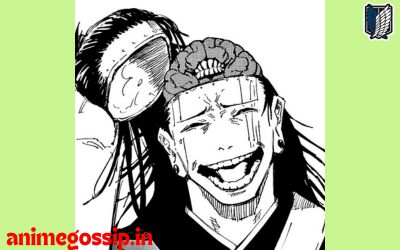
Kenjaku’s possession of Geto’s body brought a new level of complexity to the storyline. The ancient sorcerer had his own agenda and motivations, distinct from Geto’s original beliefs. This twist not only showcased the supernatural elements within the Jujutsu Kaisen universe but also added layers to the overarching plot.
The transition from Geto to Kenjaku demonstrated the complexities of the cursed energy world and the potential consequences of powerful sorcerers seeking immortality or prolonged existence through unconventional means.
This unexpected development propelled the narrative into a new phase, leaving readers and viewers interested about Kenjaku’s intentions and the impact of his influence on the events to come.
c. Kenjaku Becomes the Primary Antagonist, Revealing His Goal to Merge All Humans in Japan into a Single Entity Using Cursed Energy
Kenjaku emerged as the primary antagonist as the story progressed, organizing a sinister plan that sent shockwaves throughout the Jujutsu Sorcery realm. Kenjaku revealed his grand and ominous goal: to merge all humans in Japan into a single entity, using curses’ potent energy to achieve an unprecedented and terrifying transformation.
This revelation raised the stakes of the conflict significantly, as Kenjaku’s dangerous plot threatened the very fabric of human existence. The idea of combining individuals into a collective entity suggested a dark and twisted understanding of cursed energy, calling into question the fundamental principles of Jujutsu Sorcery.
As Kenjaku’s influence grew, the Jujutsu Sorcerers faced an uphill battle to prevent his plans and prevent humanity from collapsing. The battle against this formidable foe turned into a race against time, with Yuji Itadori at the center, fighting not only to reclaim control of his own body, but also to protect the lives and identities of countless others.
The fate of the Jujutsu Sorcery world hung in the balance in this climactic clash of ideologies and powers, setting the stage for a gripping and intense narrative that would test the limits of courage, determination, and the very essence of humanity.
Kenjaku’s Motivation
Kenjaku, a mysterious and enigmatic character in the Jujutsu Kaisen universe, is motivated by a complex set of motivations that shape the series’ narrative. One of the primary motivators for Kenjaku is his relentless pursuit of the possibilities of cursed energy and the creation of chaos.
Kenjaku’s Goal is to Explore The Possibilities of Cursed Energy
Kenjaku’s fascination with cursed energy extends beyond mere curiosity to a deep desire to test the limits of what is known and understood about this mystical force. His goal is to discover the secrets hidden within cursed energy, which could lead to the discovery of new, devastating abilities. Kenjaku’s endless thirst for knowledge and power drives him to embark on an adventure of experimentation and manipulation.
The chaos he seeks to create is unpredictable, but rather serves a purpose. Kenjaku intends to exploit the resulting vulnerabilities and further his exploration into the untapped potential of cursed energy by destabilizing the established order of the Jujutsu Kaisen world. The chaos serves as a breeding ground for evolution, forcing sorcerers and curses alike to adapt and transform in previously unimaginable ways.
Kenjaku’s obsession with chaos is not without reason. It acts as a catalyst for change, challenging what is considered normal in the realm of sorcery. This desire for chaos sets in motion a chain of events that will undoubtedly alter the balance of power in the Jujutsu Kaisen universe.
As we learn more about Kenjaku’s motivations, it becomes clear that his character is totally linked to the exploration of cursed energy and the deliberate disruption of the existing order. His ambitions pave the way for a story as unpredictable as the chaos he seeks to create.
Believes in Preserving Humanity
Exploring Kenjaku’s motivations reveals that his beliefs are diametrically opposed to those of his former ally, Geto. Geto is motivated by a deep hatred for non-sorcerers, whereas Kenjaku is motivated by a desire to preserve humanity. This fundamental difference in perspective complicates Kenjaku’s character.
Kenjaku’s actions are motivated by his belief in humanity’s worth and potential. Despite the dangers posed by cursed energy and the supernatural threats that loom over the world, Kenjaku sees humanity as a force that can be raised and harnessed for a greater purpose, not as a pawn in the grand scheme of sorcery.
This equivalent point of view contradicts the conventional narrative associated with sorcerers in the Jujutsu Kaisen universe. While the existence of curses and sorcery brings danger and chaos, Kenjaku envisions a world in which humanity, armed with knowledge and newfound abilities, can resist these supernatural threats.
It is critical to recognize that Kenjaku’s desire to explore cursed energy and cause chaos is not motivated by a fatalistic desire to see the world burn. Instead, it stems from a belief that the chaos he causes will serve as a container, forging a humanity capable of facing and overcoming the supernatural’s challenges.
We see a character whose viewpoint challenges the division between sorcerers and non-sorcerers as we unravel Kenjaku’s motivations. His dedication to the preservation of humanity adds layers of complexities to his character, positioning him as a figure whose actions, while drastic, are rooted in a vision of a world in which humanity can flourish despite the shadows that lurk in the corners of sorcery.
Survived for Over 1000 Years
Kenjaku’s longevity and ability to survive the ages add an interesting dimension to his character. Unlike regular sorcerers, who are limited by time and mortality, Kenjaku has survived for over a millennium through a mysterious and ethically dubious method.
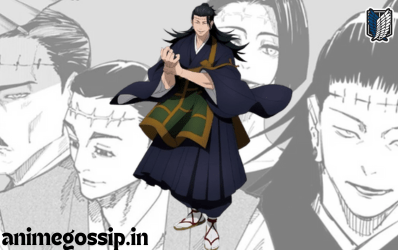
Kenjaku’s method of life extension involves a form of body possession, a dark and forbidden art that allows him to transfer his consciousness from one body to another. This technique not only grants him immortality, but also the ability to adapt to changing circumstances. Kenjaku ensures that he remains a formidable force throughout the ages by discarding old and weakened vessels.
Kenjaku’s takeover of Noritoshi Kamo, a prominent character in the Jujutsu Kaisen universe, is one notable example of his body possession. This infiltration not only demonstrates Kenjaku’s deception, but it also raises questions about the true extent of his influence and manipulation. The consequences of Kenjaku’s actions go beyond the physical realm, leaving an indelible mark on the characters and events of the story.
The decision to use Noritoshi Kamo as a vessel adds depth to Kenjaku’s character. It emphasizes his willingness to take advantage of existing power structures and manipulate key figures in order to achieve his objectives. The consequences of such actions echoed throughout the story, leaving both characters and readers to consider the implications of Kenjaku’s continued existence.
We are confronted with ethical dilemma and the darker aspects of sorcery as we delve into the mysteries surrounding Kenjaku’s ability to survive for centuries. His method of body possession raises concerns about the moral boundaries that sorcerers are willing to cross in order to gain power and longevity.
In summary, Kenjaku’s survival for over 1000 years through body manipulation, including that of Noritoshi Kamo, adds a layer of interest and moral complexity to his character, laying the groundwork for further revelations and conflicts within the Jujutsu Kaisen narrative.
Impact on the Story
a. Kenjaku’s actions lead to the culling game and the encouragement of the USA to invade Japan
The character Kenjaku emerges as a pivotal force in the complex web of Jujutsu Kaisen’s storyline, shaping the very foundation of the narrative. His calculated and sinister actions not only propel the plot forward, but also have far-reaching consequences for the series’ world.
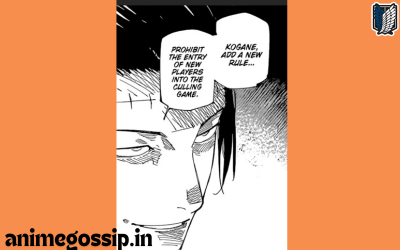
Kenjaku’s evil schemes give birth to the culling game, an ominous event that adds a new level of ferocity to the series. The culling game transforms into a pot in which characters are tested, alliances are formed, and the stakes are raised to previously unheard-of levels. It functions as a battleground for the characters, both protagonists and antagonists, to confront their fears and grapple with the harsh realities of the Jujutsu world.
Furthermore, Kenjaku’s participation serves as a catalyst for international tensions. The subtle encouragement of the United States to invade Japan adds a geopolitical dimension to the story that transcends the supernatural. This external threat not only makes the characters’ missions more urgent, but it also introduces a complex interplay between the mystical and the ordinary.
Kenjaku’s actions are more than just plot devices; they are essential elements that propel the plot forward, creating waves that extend far beyond the realm of Jujutsu battles. His calculated moves set off a chain reaction that reshapes the landscape of the Jujutsu Kaisen universe.
b. Serves as a foil to Geto, presenting a different perspective on humanity
Kenjaku emerges as a striking foil to the enigmatic Geto in the rich tapestry of characters woven into Jujutsu Kaisen. While both characters have a dark and complicated past, their perspectives on humanity are profoundly different.
Geto represents a darker side of Jujutsu society, with his fatalistic worldview and contempt for humanity. On the contrary, Kenjaku offers a different perspective, providing a more equivalent understanding of human nature. Though his motivations are rooted in a desire for change, they present a complex moral landscape that challenges the audience to question the lines between good and evil.
Kenjaku’s character functions as a mirror, reflecting the various shades of grey in the Jujutsu world. Viewers are confronted with a character whose convictions, while morally dark, add depth to the overarching narrative as they peel back the layers of his backstory and motivations. The interaction between Kenjaku and Geto transforms into an enthralling exploration of opposing ideologies, forcing both characters and audience to confront the complexities of their own beliefs.
This foil dynamic adds a level of experience to the storytelling, elevating Jujutsu Kaisen above the level of a simple battle series. It considers the nature of morality, redemption, and the consequences of wielding supernatural powers in a world where the line between good and evil is blurred.
c. Kenjaku’s character adds depth to the narrative, making Jujutsu Kaisen a unique and evolving story
Kenjaku, as the mastermind organizing events from the shadows, becomes an essential component of Jujutsu Kaisen’s narrative structure. His character is a driving force behind the story’s evolution, adding to the series’ distinctive and dynamic nature.
Kenjaku’s character complexity transcends traditional notions of antagonism. His complex backstory, motives, and layers of deception he employs add a level of sophistication to the story. The audience is constantly compelled to assess their understanding of his character, keeping them on the edge of their seats as they navigate the plot’s twists and turns.
Furthermore, Kenjaku’s presence serves as a catalyst for the protagonists’ character development. He forces them to confront their own beliefs, motivations, and abilities, promoting growth and evolution. This dynamic ensures that Jujutsu Kaisen is a constantly evolving journey for both the characters and the audience.
Kenjaku’s schemes add unpredictability to the series, keeping it fresh and engaging. The audience is treated to a narrative that refuses to be confined by traditional storytelling conventions as he continues to manipulate events and reveal hidden truths. Kenjaku’s presence ensures that Jujutsu Kaisen remains a dynamic and captivating experience, pushing the supernatural genre’s boundaries.
Finally, Kenjaku’s influence on the story goes beyond that of an antagonist; he becomes a driving force that propels Jujutsu Kaisen into a league of its own, where complexity, moral equivocation, and constant evolution define the essence of the narrative.
Conclusion
The character Suguru Geto in Jujutsu Kaisen undergoes significant development throughout the series, tranforming from an antagonist with a deep hatred for non-sorcerers to a complex individual grappling with internal conflicts. His shift in perspective, influenced by personal experiences and the evolving narrative, adds depth to his character. Geto’s ultimate defeat and takeover by the ancient sorcerer Kenjaku mark a crucial turning point in the story, leading to unforeseen consequences such as the culling game and international tensions.
Kenjaku’s motivations, distinct from Geto’s, contribute to the complexity of the narrative. His goal to merge humans using cursed energy for chaos and exploration contrasts with Geto’s initial misanthropy. The survival of Kenjaku through various bodies, including Noritoshi Kamo, further complicates the storyline, introducing a centuries-old antagonist with profound implications.
The impact of these characters on the Jujutsu Kaisen narrative extends beyond individual arcs. Kenjaku’s actions trigger significant events, such as the culling game and the USA’s consideration to invade Japan, showcasing the ripple effects of their presence. The contrasting ideologies of Geto and Kenjaku serve as foils, presenting diverse perspectives on humanity within the magical world of Jujutsu Kaisen.
In summary, the interplay between Suguru Geto and Kenjaku adds layers to the storytelling, creating a dynamic and evolving narrative in Jujutsu Kaisen. Their characters contribute not only to the individual arcs but also to the overall themes and consequences within the series.
FAQ’s
1. Why was Suguru Geto expelled from Jujutsu High, and what incident led to his expulsion?
A. Suguru Geto was expelled from Jujutsu High due to an incident where he massacred over a hundred civilians. This brutal act earned him the title of the worst curse user and led to his expulsion from the institution.
2. What are the key characteristics of Suguru Geto’s personality, and how does his attitude towards non-sorcerers evolve throughout the series?
A. Suguru Geto initially harbored intense hatred towards non-sorcerers, often referring to them as “monkeys.” However, his perspective evolves over time, especially after the death of Riko Amanai and the actions of the Star Religious Group. This leads to a deep internal conflict and questioning of his earlier beliefs.
3. What is the significance of Suguru Geto’s change in ideology after the death of Riko Amanai and the actions of the Star Religious Group? How does this impact the overall storyline?
A. Suguru Geto’s change in ideology is significant as it introduces a layer of complexity to his character. The internal conflict and questioning of his beliefs add depth to the narrative, impacting the overall storyline by showcasing the evolution of characters and their motivations.
4. Can you explain the background story of Suguru Geto, particularly the incident that prompted him to become a curse user? How does this shape his motivations and actions?
A. Suguru Geto chose to become a curse user after an incident involving mistreated girls in a village. His rescue of the girls led to the killing of all 112 residents of the village, officially marking his transformation into a curse user. This background story shapes his motivations, as he fights for a world of only sorcerers, driven by his disdain for non-sorcerers.
5. What abilities and powers does Suguru Geto possess as a special grade sorcerer, and how does he utilize them in the story, especially during the Night Parade of a Hundred Demons?
A. Suguru Geto is a special grade sorcerer, considered one of the strongest alongside Satoru Gojo during his time as a student. He is skilled in both cursed spirit manipulation and hand-to-hand combat. During the Night Parade of a Hundred Demons, he displays strategic intellect while executing war on Jujutsu High.
6. What is the aftermath of Suguru Geto’s defeat, and how does the introduction of Kenjaku as the primary antagonist affect the overall plot of Jujutsu Kaisen?
A. After Suguru Geto’s defeat by Yuta Okkotsu, his body is taken over by an ancient sorcerer named Kenjaku. Kenjaku becomes the primary antagonist, revealing his goal to merge all humans in Japan into a single entity using cursed energy. This introduces a new and formidable threat, leading to the culling game and influencing international relations as the USA is encouraged to invade Japan. Kenjaku’s character adds depth to the narrative, offering a different perspective on humanity compared to Geto’s hatred for non-sorcerers.

